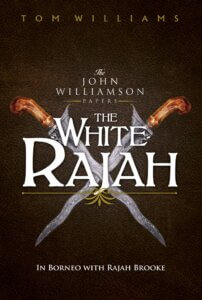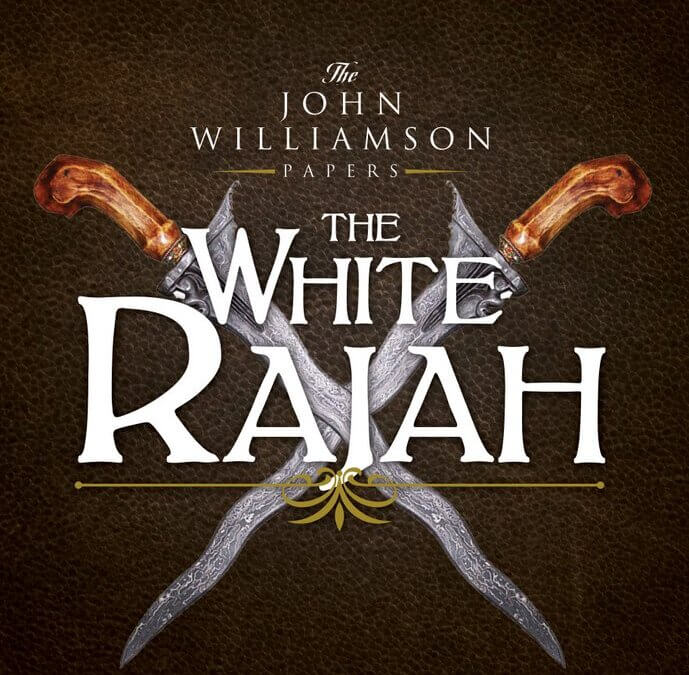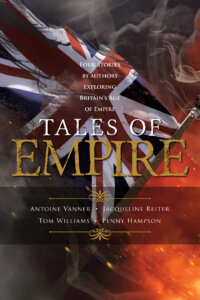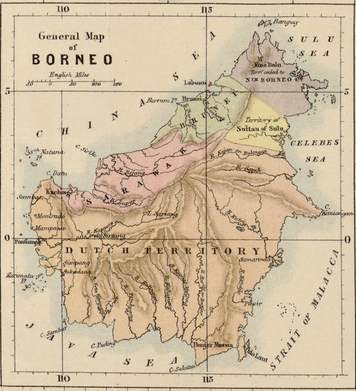Kris: the magical sword of Malaysia
This week, I was pleasantly surprised to get a comment on a post I wrote on my old blog back in 2016. It made me think that there are still people who might be interested in what I said then so I’m reposting it here. I hope you find this interesting. I think that the swords are beautiful and the more I know about them, the more I appreciate them. If you find the text heavy going, enjoy the pictures.
I first came across kris on holiday in Borneo. This was the holiday where I discovered James Brooke, whose life eventually became the story of my first ever novel, The White Rajah. Kris and Brooke have always been linked in my mind since then. There’s even a kris on the cover of the book.

What exactly are kris? Most are really too long to be called daggers but too short for swords. They’re a distinctive weapon common in South East Asia, being found throughout Indonesia and Malaysia. In the UK they’re usually depicted (as in the cover illustration) as wavy, though they come in a variety of shapes and sizes with marked differences from one area to another. Some old kris are as small as any dagger and the largest are the size of a sword. There isn’t even any agreement about how it should be spelt. Although ‘kris’ is the usual English spelling, I have also often seen it spelt ‘keris’. Wikipedia throws up even more variants: ‘cryse’, ‘crise’, ‘criss’, ‘kriss’ and ‘creese’, although these appear obsolete terms used by European colonists. Generally, the usual spelling in the West is ‘kris’, while ‘keris’ is more popular in the East.
Despite the variety of spellings, sizes and shapes, kris are easy to recognise. What are the attributes that define them?
The blade
The first thing is that all kris have, to a greater or lesser extent, “watered” blades. I’m going to write a lot more about this in a separate post, which is likely to appeal to a more specialist audience, but for now I’ll just say that the watering here is produced by a technique called ‘pattern welding’. Although the pattern can resemble that seen in the famed damascene steel, these blades are produced by a completely different technique and are vastly inferior in quality. They are quite beautiful though.
Some legends say that this pattern, known as the “pamor”, is made by the waves of the hair of a spirit inhabiting the blade. In fact, the waves are the result of the kris being made from thin bars of iron or steel which are beaten together. I’ll be writing separately about how these and other blades are made in a post for sword/metallurgy geeks.
The top of blade is wider on one side, maintaining a sharp edge. The other side is decorated with a curl in the metal, which resembles an elephant’s trunk (the ‘belalai gajah’). A good example of this is shown in figure 2.

FIG 2. Detail of a Kris Ksay Cantrik from Jogjakarta, Java.
The widening of the blade allows it to form a guard (the ‘ganja’). The guard is usually made from a separate piece of metal. This is placed across the top of the blade, providing a stronger and more effective protection for the user’s hands. Although this is made separately, during the forging of the weapon it is attached to the main part of the blade. This is also clearly visible in figure 2. At the top (in figure) a gap is clear between the main part of the blade and the guard, but the two are firmly joined beyond that point.
Some people suggest that the shape is derived from the shape of a stingray’s ‘sting’. The idea is that people used the sting as a weapon and then produced metal weapons based on the same shape. Unlikely as it is, the oldest kris are very small and thin and the resemblance there is more marked.
The details of the decoration at the top of blade vary considerably. The example shown in figure 2 could be regarded as typical. The example shown in figure 3 shows how, in some cases, these elements are reduced to a minimal symbolic representation. However, they are always present even if, as here, the cross piece is omitted.

The tang (the bit of the blade that fits into the hilt) is very narrow. This is a significant weakness of the kris as a weapon. European sailors fighting natives armed with kris would typically use a belaying pin (essentially a large, heavy stick) to disarm their opponents by striking the kris blade, which would snap at the tang.
The kris in use
The hilts are sometimes described as offering a pistol grip. The blade is held horizontal to the ground. The fist fits around the hilt with the thumb and forefinger pinching the blade itself. Held like this, the so that the guard covers the base knuckle of the forefinger. (This would not be the case with the very long kris of the Philippines, which are, effectively, swords and will be held in the usual way.)
If only one kris is being used, it’s generally held in the right hand, with the scabbard sometimes held in the left, where it can be used to ward off blows. According to Draeger and Smith, the kris fighter will strike into soft flesh target areas of his enemy with the abdominal region, throat, and kidney areas most highly favoured.
I have seen displays, showing how the kris might be used in combat. Such displays, called main silat are a traditional form of entertainment where the duellists imitate the thrusts and parries, the passes and steps of a fight to the death. It is impossible to be sure how accurately these reflect fighting in the days when they were typically used, but the display I witnessed seemeda very stylised form of fighting, rather than a straightforward thrust and parry. Of course, as any fighting style becomes more refined it can take on an almost ritualistic quality, like fencing with the epee. It may be that the main advantage that English sailors had was that they did not bother with the finer points of kris use but simply bludgeoned their way to victory.
The style of fighting does mean that the blade will often slide along your opponent’s guard and the guard was often notched. This would serve to catch your opponent’s blade momentarily, and might give you an advantage.
Many people suggest kris blades were poisoned, although it is difficult to find any evidence that this was common. There are lots of Malaysian plants that can be used to make poisons (and blow-pipe darts, for example, have to be poisoned to be effective) but making these poisons takes time and if they are left smeared on the blade they soon become ineffective. You’d need a lot to cover the whole length of the blade and it’s just not an efficient way of killing. The application of poison to the blade hardly seems necessary as the blade is extremely lethal anyway. Perhaps the use of arsenic and lime juice to clean and etch the blade in its final stages of preparation has given rise to the idea that all kris blades were poisonous.
Kris were also used in executions. It is likely that straight edged kris were preferred for this. In the West, straight kris are sometimes referred to as executioners kris. This is, in part, because of a notion that straight kris are unusual and therefore probably reserved for some special purpose, but, as we have seen, this is a misunderstanding. Straight kris are, if anything, more common than the wavy ones. Not all of them could have been used principally for executions.
Nonetheless, the straight kris is particularly well adapted to the traditional manner of execution in which the victim is held with their arms out their sides and the kris is pushed vertically down through their collarbone into the heart, causing instant death. The kris may be pushed through wadding to reduce the amount of blood generated.
The hilt
The hilts are usually made of wood, often kemuning, which some people claim has magical qualities. Weapons owned as status symbols may well have hilts of horn, ivory (elephant or walrus) or bone.
The hilts of kris are always carved into symbolic decorations, often with a religious element. Many hilts represent the garuda bird, which carries the god Vishnu in Hindu myth. Sometimes these images are elaborate, but, in many cases, they are very stylised and can appear quite plain. Examples of two extremes of decorative style are shown in figure 5.
Although the most common image is that of a more or less stylised garuda, other patterns are seen. Sometimes, the figure is that of a crouching man. The Erotic Museum in Berlin has several examples of hilts which represent people engaged in sexual acts.
A particularly interesting type of hilt is tajong, known in the West as a “Kingfisher” hilt. This is characterised by a long “beak” extending from the end of the hilt. Carving these takes considerable skill, and such hilts are rare. The workmanship would have made them valued when they were originally produced, but their scarcity nowadays means that they are worth considerable sums to collectors.
Although Western collectors attach great significance to the hilts, it is important to remember that the culture is that produced the kris saw the true magic and value of the weapon as lying in the blade. The blade will be preserved as the furniture is changed. This is particularly the case with kris that have been traded by collectors. It is common for hilts to be removed from blades so that a particularly good hilt can be matched with a particularly good blade to make a more saleable piece. My own collection includes kris where the orientation of the hilts to the blade is wrong, indicating that the hilt has been replaced. Whilst the furniture of a kris can provide useful clues as to its provenance, they can never be definitive.
The hilt usually sits in a small metal cup (the pendongkok), separating the hilt from the main part of the blade. Figure 3 shows a relatively elaborate example of this. Once the hilts are removed, the cup, which is not attached to the blade, is easily slipped off and therefore often changed when hilts are changed. In some examples held by Western collectors, the cup will be missing.
The sheath
Kris sheaths are also distinctive. Sheaths are made of wood, although they may be covered with a metal sleeve. The end of the sheath might be tipped with a chap of bone or ivory (the buntut). They are distinguished by a wide wooden crosspiece (the sampir) which protects the guard of the weapon. This is often described as “boat shaped”. The sampir may be a relatively functional rectilinear shape or an elaborately carved piece of decorative work.

The kris as a spiritual object
Kris are valued as spiritual objects. Although there is some uncertainty surrounding their origin, it is likely that the very first kris were the kris majapahit. ‘Majapahit‘ refers to the Majapahit Empire, which was based on Java in the 14th to 15th centuries. The very first kris were made when iron was a rare and precious metal. Early kris may well have been made of meteoric iron. They were very small, and may have been intended for use in religious ceremonies, rather than combat. The symbolic carving of the hilts reflects their continuing religious links.

Traditionally, the manufacture of kris was surrounded with ceremonies reflecting the fact that the early smiths were practising an art which was viewed as as much magical as technological. Some stories say that women smiths would temper the blade by drawing the red hot metal through their vulva before throwing it into water. Another version says that every kris would be tempered by being stabbed into the body of a prisoner, so that a person would be killed for every kris that was made.
Although kris are functionally defined by their use as weapons, they have always been much more than that. Often beautifully decorated (sometimes with gold worked into the surface of the blade) and with hilts and scabbards so ornate as to make them almost useless for fighting, kris are symbols of status, and of craft and cultural values at least 700 years old. Collected enthusiastically by Europeans (especially the Dutch), they can still be found and bought at affordable prices in the markets of Malaysia and Indonesia. The huge variety of styles and the stories that go with them make these a source of continual fascination to any traveller in the region.
FURTHER READING
Draeger and Smith (1986) Comprehensive Asian Fighting Arts. Kodansha America, Inc
Gardner (1936) Keris and Other Malay Weapons . Progressive Publishing Company: Singapore
Hill (1956) The Keris and Other Malay Weapons, Journal of the Malayan Branch of the Royal Asiatic Society, Vol. 29, Part 4, No. 176.
Another post, all about the metallurgy of pattern welded and watered blades, is available HERE.
About ‘The White Rajah’

The White Rajah is the first of three books about John Williamson. Williamson is a fictional character, but his adventures take him into the lives of some very real historical figures. The White Rajah is quite closely based on the life of Sir James Brooke. Like the true story of his life, it raises issues about colonialism and our attitudes to what we now call Third World countries. But like his life, it also has pirates and rebellions and battles. And there’s an orang-utan who, if I’m entirely honest, probably wasn’t there in real life. It took quite a long time to research and write and is available on Kindle at the embarrassingly low price of 99p. You can use this book link to buy it, wherever you are in the world. Please do.









